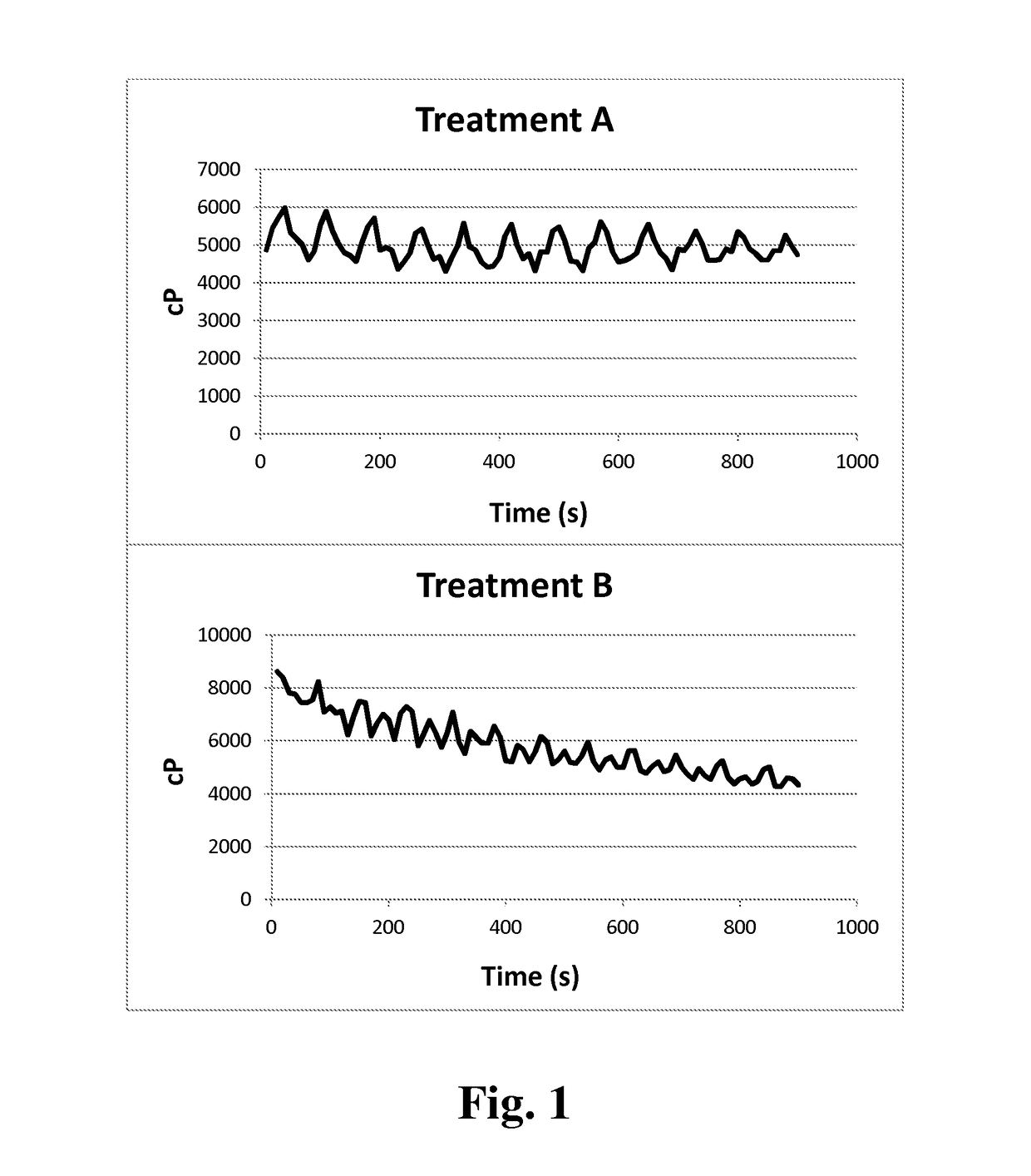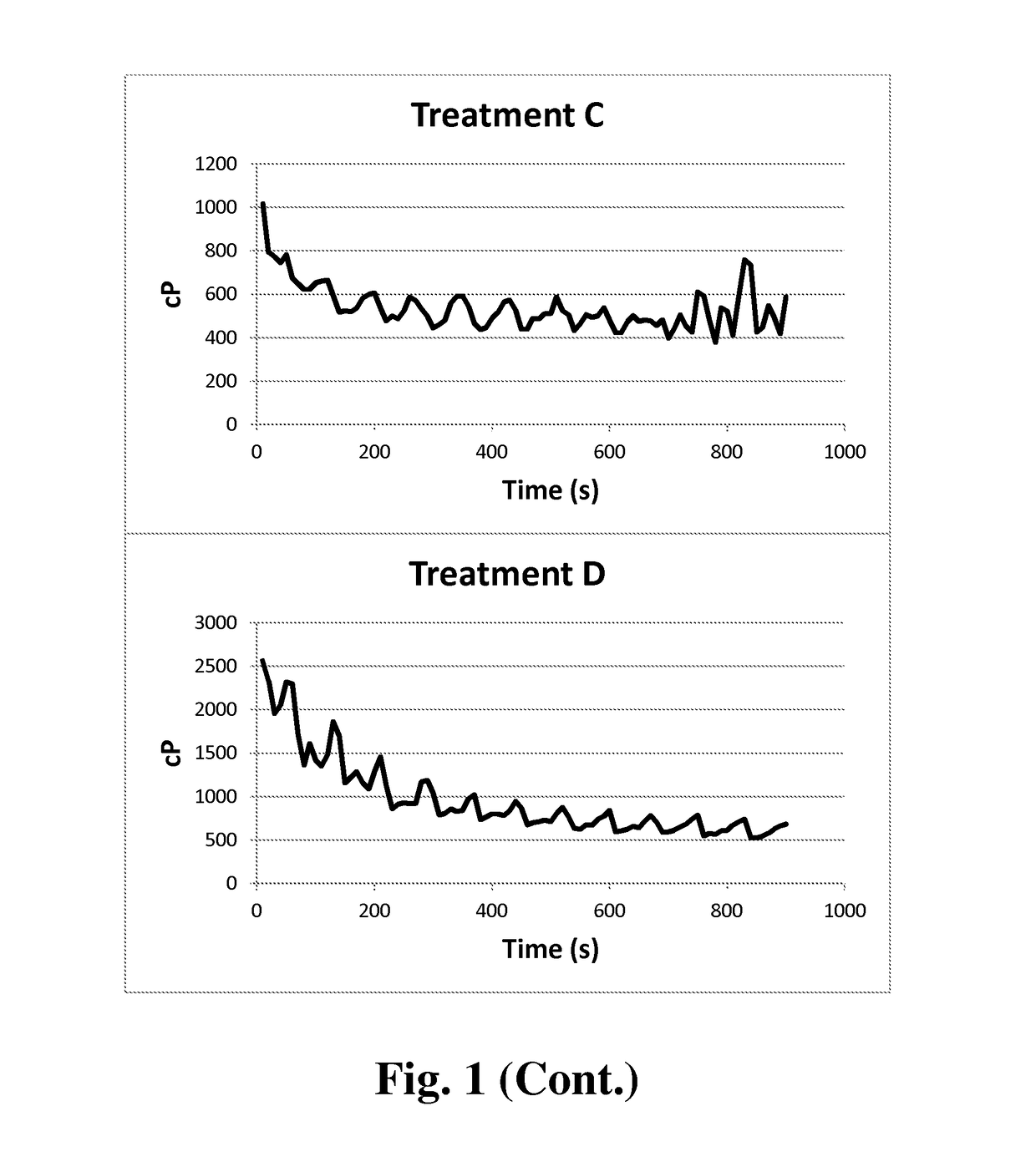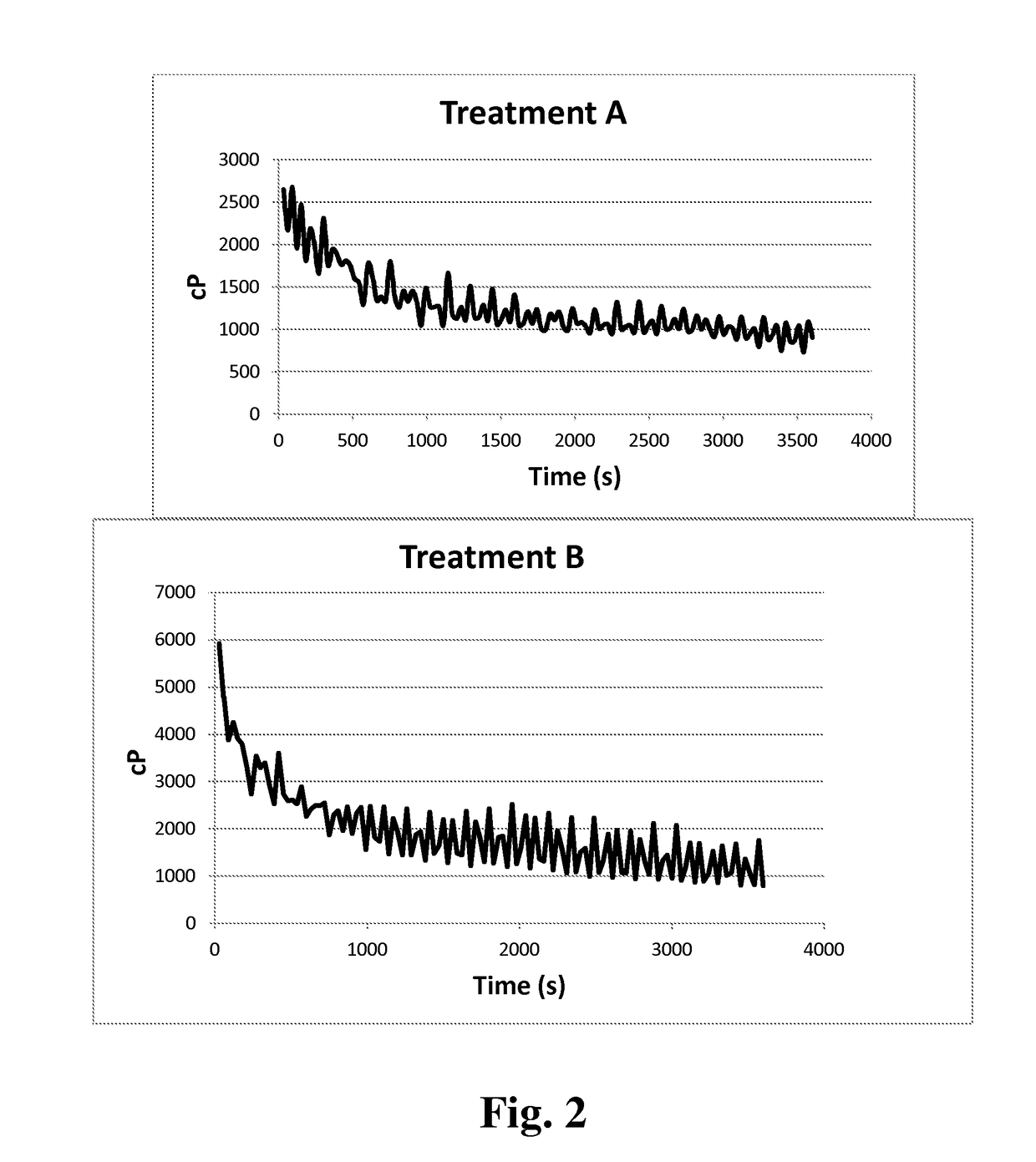Processes to Produce Unpurified Polygalacturonic Acids from Plant Tissue Using Calcium Sequestering Compounds
- Summary
- Abstract
- Description
- Claims
- Application Information
AI Technical Summary
Benefits of technology
Problems solved by technology
Method used
Image
Examples
example 1
[0072]Citrus peel flour was prepared for TSP treatment by collecting peel following juice extraction. Peel was dried at 70° C. in a laboratory convection oven. Dried peel was milled in a Wiley rotary mill using a 40 mesh screen to reduce particle size to approximately 200×200 microns. To determine preferred TSP saponification conditions, four batches of 1.5% (w / v) dried peel flour were made to a slurry in cold (4° C.) 50 mM TSP (250 mL). The pH of each slurry was checked to insure it was greater than or equal to pH 11.5. The slurries were stirred in the cold (2° to 4° C.) for 24 h and the pH was checked periodically and adjusted if needed to keep it above pH 11.5. After 24 h each slurry was rapidly heated to 80° C. (approximately 3.5 min with occasional stirring) in a microwave oven. The slurries were then placed in an 80° C. oven and stirred for 15 min. Following this thermal treatment the slurries were treated as follows: (A) Treatment A: The slurry was neutralized to approximatel...
example 2
[0074]Citrus peel flour was also prepared by an alternative process in a pilot scale setting utilizing a continuous feed operation to pass citrus peel through a jet cooker in which steam was injected, raising the temperature to approximately 255° C. (post hold tube) and 40 to 50 psi at steam injection. This steam exploded citrus peel was held at this temperature for 1 to 2 minutes before the pressure was released by venting to a flash tank (the following U.S. patents are related to this methodology: U.S. Pat. Nos. 8,372,614; 7,721,980; 7,879,379) This steam exploded peel was collected and frozen at −20° C. Aliquots of this frozen material were thawed and treated with TSP as detailed for Treatment B above. Viscosity measurements were also determined as described above at 170 reciprocal seconds, 65° C. and 60 min for both 1.5% (FIGS. 4 and 6) and 3.0% (FIG. 5) suspensions.
[0075]All material prepared by the four treatments outlined in Example 1 demonstrated the ability to introduce fun...
PUM
| Property | Measurement | Unit |
|---|---|---|
| Temperature | aaaaa | aaaaa |
| Temperature | aaaaa | aaaaa |
| Temperature | aaaaa | aaaaa |
Abstract
Description
Claims
Application Information
 Login to view more
Login to view more - R&D Engineer
- R&D Manager
- IP Professional
- Industry Leading Data Capabilities
- Powerful AI technology
- Patent DNA Extraction
Browse by: Latest US Patents, China's latest patents, Technical Efficacy Thesaurus, Application Domain, Technology Topic.
© 2024 PatSnap. All rights reserved.Legal|Privacy policy|Modern Slavery Act Transparency Statement|Sitemap



